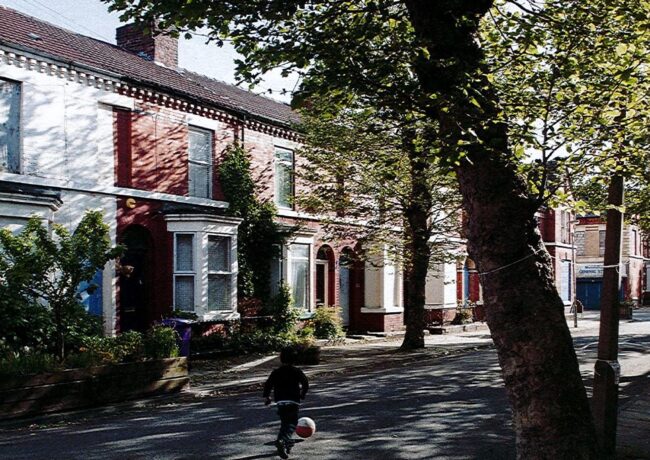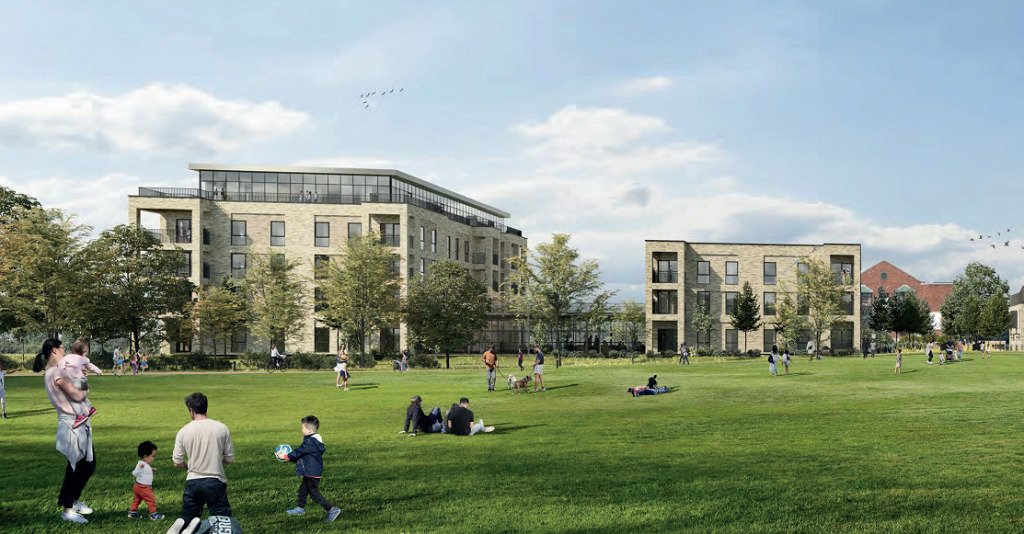Turner Prize awarded to Liverpool housing project
London-based collective Assemble has won the Turner Prize, the British art world’s most coveted and controversial award, for its work on a regeneration scheme at Granby Four Streets in Toxteth.
Assemble works across the fields of art, design and architecture to create projects in partnership with the communities who use and inhabit them. The group was founded in 2010 and is made up of 18 people.
The group was awarded the prize along with £25,000 at a ceremony in Glasgow yesterday evening, Monday 7 December.
The Granby Four Streets are a cluster of terraced houses in Toxteth, Liverpool that were built in the early 1900s to house artisan workers. Following the Toxteth riots in 1981, the council acquired many of the houses in the area for demolition and redevelopment. Due to the relocation of many residents the area fell into a state of disrepair.
Assemble worked with resident group Granby Four Streets Community Land Trust and Steinbeck Studios to create a sustainable vision for the area. According to the group, the project “builds on the hard work already done by local residents and translates it to the refurbishment of housing, public space and the provision of new work and enterprise opportunities.
“The approach is characterised by celebrating the value of the area’s architectural and cultural heritage, supporting public involvement and partnership working, offering local training and employment opportunities and nurturing the resourcefulness and DIY spirit that defines the four streets.”
Many of the streets in Granby, on the edge of Toxteth, have been boarded up for decades. In 2014 Liverpool City Council agreed a three-year deal with Liverpool Mutual Homes and Plus Dane Group to refurbish 95 homes in the Granby Four Streets.
Separately, the Granby Community Land Trust agreed to refurbish 10 properties in Cairns Street and brought Assemble on board to advise on the project.
According to the Turner Prize judges, Assemble’s work “draws on long traditions of artistic and collective initiatives that experiment in art, design and architecture. In doing so they offer alternative models to how societies can work. The long-term collaboration between Granby Four Streets and Assemble shows the importance of artistic practice being able to drive and shape urgent issues.”
Aseemble beat three other shortlisted artists; Bonnie Camplin, Nicole Wermers and Janice Kerbel.
The Turner Prize, named after the English painter J.M.W. Turner, was established in 1984 and is an annual prize presented to a British visual artist under the age of 50.





Well done Granby/Toxteth! You live in a beautiful area – just needs a little love and care. I remember Jermyn Street in the 1970s when the whole area was full of life, great to see it all coming back.
By Paul Blackburn (Chester)
Fantastic. So much to work with in this area
By Waterhouse
Congratulations, we are naturally good at culture and not manufactured implants like elsewhere.
By Man on bicycle
It’s a London firm who won this, not a Liverpool firm. Not really great publicity for the North West, attracting national attention to this very run down area where nobody wants to live.
By Sparks
Sparks, the community got involved and it is extremely popular locally. That is something to be proud of.
By Uni
I believe at the invite and instructions of the Granby residents?
By Man on bicycle
see a manchester troll has entered the room ….qell don’t ahain to Liverpool
By matt
BySparks – dreadful! We know it was a London firm but the local people deserve some credit and Toxteth is a very beautiful area that deserves the good publicity. I will shout up for it as loudly as I can!
By Paul Blackburn (Chester)
And Place should be promoting Toxteth too!
By Paul Blackburn (Chester)
An excellent, imaginative and refreshing approach to regenerating unpopular housing. Two points however. This is more cultural regeneration than physical or economic regeneration. It’s an novel pilot but is it replicable on a larger scale? I’m not so sure. Secondly let’s not pretend this anything other than another top down initiative. Just like 2008’s Capital of Culture festival which was state implanted cultural regeneration, Assembly were in Liverpool at the behest of external investors not at the invitation of residents. That being the case, claims for this providing a new model of inner city regeneration are wide of the mark.
By Reader
State implanted cultural regeneration…. well there’s a dismissive of a city’s revival for you! If something works lets embrace it. Let’s try the novel, if people embrace it then it’s worth it. The Toxteth project is small scale but let’s give things like that a chance!
By Paul Blackburn (Chester)
Fantastic! Lets have more of this! who cares if Assemble are London or Liverpool based the project has done something wonderful for the area and the city! Well done!
By Mary Smiley
Having visited many modern art galleries and gazed upon numerous exhibits of pre recorded vox pops and tables and floors of inanimate objects, I find this piece of particuliar interest and pleasure.
It is a living and breathing stage of life and presents a new chapter in Modern Art..it may upset current advocats of their own gendre but that is what Modern Art, is all about after all?
The piece or sculpture or canvas is the winner and that is the important thing to remember, Banksy creates all over the world, but where he leaves his art is the most important factor as it reflects the area and place and time and we have a great addition to our cultural collection here in Liverpool.
By Man on bicycle
Reader’s point about if it’s cultural regeneration is interesting, perhaps it is but that’s exactly what was lacking in 1960s and 70s urban regeneration schemes, the human, street level content. I have no doubt that this scheme will be far more sustainable than many more far more expensive schemes with similar aims of the last 50 years. See also the Eldonian village, also in Liverpool, like this globally relevant. Sure it might not be possible or even preferable to repeat exactly elsewhere, but the ethos of Granby and Eldonian, of designing with not for, where possible reusing rather than demolitioning, focusing on local needs and sustainability in it’s different forms, are things that all urban authorities should take note of and frankly, should have a long time ago, in future developments. Meanwhile the CLT model might also help avoid some of the inevitable gentrification of such redevelopment.
Reader is also inaccurate in suggesting this was a top down scheme. One of the CLTs investors put forward Assemble, not Assembly by the way, to do some initial pro bono support work. Later, the CLT choose them as their architects through a competitive process because they liked their ethos. If only more schemes were done this way. The state doesn’t come into it beyond the CLT eventually convincing a reluctant Council to give them the houses for free.
By HJM